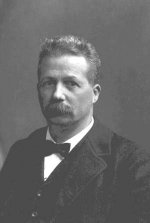Legends are stories from
our past that are circulated and believed by many even though there
isn't any real life proof of truth. As you can see legends play an
important part in the discovery of truth.
Some of the Native
American Indians of the northwest speak of encounters with 'The
Little People'. The Little People are part of the legends and myth of
the Arapaho and Shoshoni, quite a few other tribes. There appears to
be different types of these beings, some being more intelligent
beings and those that are more violent in nature.
The Arapaho's apparently,
were aware of such little people. This is what was briefly said
about them.
1. According
to tradition the beings were 3ft tall
2. Incredibly
strong and feared because they had a taste for human flesh
3.
Cannibalistic devils that perished in a great forest fire.
Here's an interesting story about Cannibal Dwarves.
Legendary Native American Figures:
Cannibal Dwarves
Although benign races of
small magical creatures exist in many Native American tribes, the
Little People of the Arapahos and neighboring tribes-- also known as
Cannibal Dwarves or Enemy Dwarves-- are dangerous man-eaters and
particular enemies of the Arapaho tribe. Their Arapaho name,
Hecesiiteihii, literally means "little people."
("Teihiihan" comes from the Arapaho word for "strong"--
Arapaho dwarves are said to have superhuman strength.) In some texts
they are referred to as "Nimerigar" instead, which is a
name borrowed from the neighboring Shoshone tribe (who had similar
legends about ferocious little people.) Descriptions of the cannibal
dwarves vary somewhat from community to community, but they are
usually said to be the size of children, dark-skinned, and extremely
aggressive. Some storytellers say that they had the power to turn
themselves invisible, while others say they were hard to spot simply
because they moved with incredible speed. Some suggest that the
dwarves' warlike temperament comes because they must be killed in
battle to reach the dwarf afterworld. Others believe that they were
gluttons who habitually killed more than they could eat just because
they could. According to most versions of the story, the race of
cannibal dwarves was destroyed in an ancient war with the Arapahos
and other allied Native American tribes.
Puk-wud-jies. Translation
of the name means little wild people of the forest
1. 2 Ft
tall
2. white skin, brown
hair and dressed in clothing made from grasses and tree bark
3. lived in caves
along the riverbanks
More folklore according
to Flathead tradition.
1. 3 Ft dwarves
2. considered peaceful
3. If approached,
people would fall into a swoon and awake upside down in a tree or
missing some of their clothing.
Stick Indians of Nez
Perce, according to tradition.
1. Strange sounds,
sometimes hoot like owls or howl like a coyote
2. very strong
3. kidnap people and
sheep, calves
4. no tracks found
5. able to render
themselves invisible and if you do see them you will endure a
painful swelling of the face.
Supposedly, near Mount
Adams some people were huckleberrying and decided to lock the baby in
the car to keep it safe. No one else was in the car. While they were
picking berries they heard the baby cry, when they reached the car
the baby was gone. They heard it cry out again from another direction
and that is where they found it.
I would also like to
point out that in the Missing 411 Eastern United States book by David
Paulides, there is a case of a missing 5 year boy, 25 miles south of
Mount Adams, Washington. More of the case can be read on pg. 16-17 of
that book. This young boy was later found after some lengthy
searches, he was over 5 miles from the point he was last seen and he
was missing one shoe and apparently in phenomenal shape for being out
in the rugged wilderness for 2 full days.
If you look at some of
the information provided you will begin to see that these strange
occurrences are not new to North America. What really peaks my
interest is that with all the people going missing in our national
parks maybe, just maybe we are not looking in the right places or seeing all that is to be seen.
Quite possibly these legends and oral traditions are part of the key to
finding some of the answers.
I must admit there are some striking
similarities to the disappearances that have occurred in our National
Parks. I'm in no way saying that these are the answers to the missing
persons cases, there may be a combination of phenomena happening that
we haven't looked at yet.
skull, bone
fragments, teeth found
the taste for human
flesh
people found are
in a semi-conscious or unconscious state lying face down with limbs
extended.
clothing removed
or missing
fall into a swoon
upside down in a tree and missing some of their clothing
victims are found
near creeks rivers and streams...
caves along the
riverbanks
Berry pickers
vanishing, children found near berry bushes
Huckleberrying







